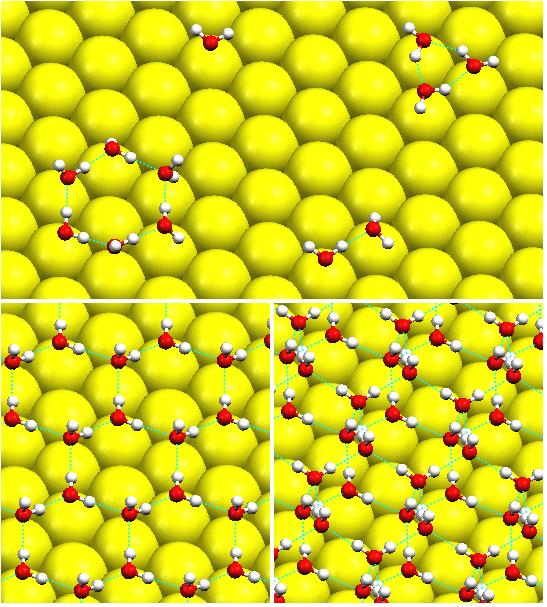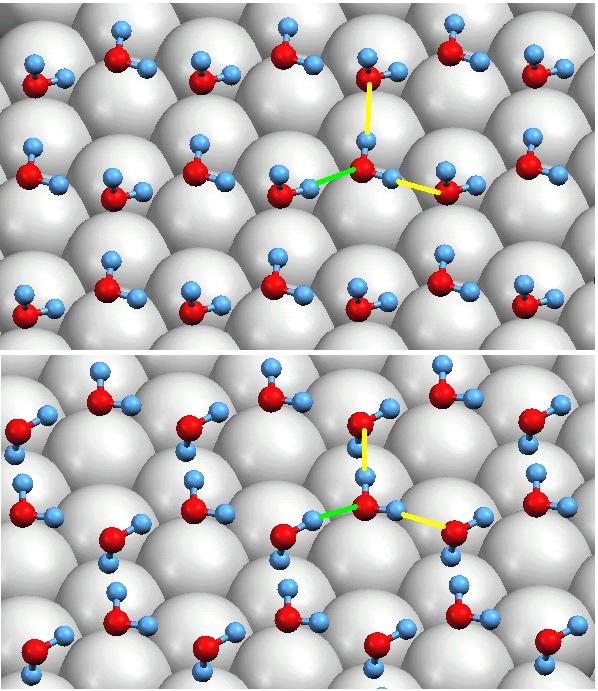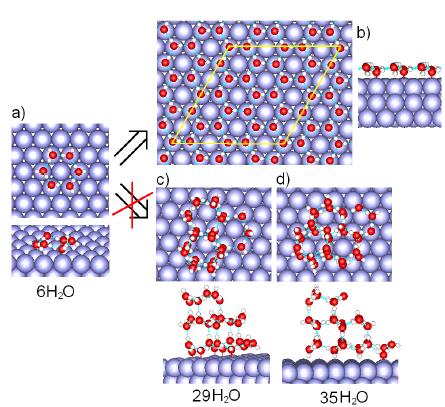表面水结构 Water Wetting
We have a long history to study water wetting at solid surfaces, including transition and nobel metal surfaces, silicon dioxides, and salts. Our aim is to obtain the understanding of water wettability on surfaces at the atomic level. As a result, we have identified the structure of various water clusters, intact and dissociated water adlayers, multilayers, predicted a novel ice pattern composed by quadrangles and octagons on silica, and studied the atomistic processes of NaCl dissolution into water. We proposed some new criteria to determine surface wetting based on quantities at the molecular scale, such as water monomer binding energy. Some older projects can be found here.

Water monomer, small clusters, a single bilayer, and multilayers adsorption on the Au(111) surface.

Hydrogen bonds of different strength in the water bilayer on Pt(111), identified from molecular vibrations.

Why Au(111) is hydrophobic and Pt(111) hydrophilic? Comparison of water binding energy to the hydrogen bond strength explains.

Water dissociation on Ru(0001) is blocked by a barrier, though it is thermodynamically favorable.

Kinetic differences in formation pathways explain why the first water layer wets Pt(111), Ru(0001), and Rh(111).

Proton transfer dynamics in the wetting layer on Pt(111).
